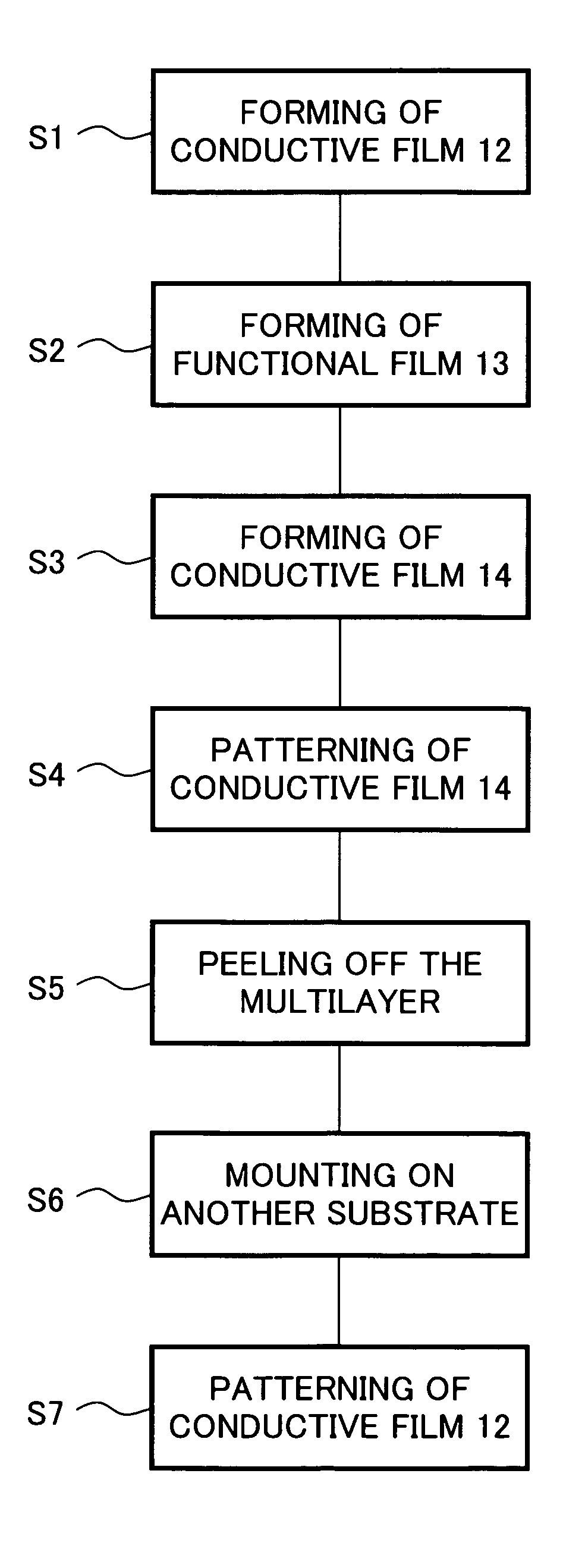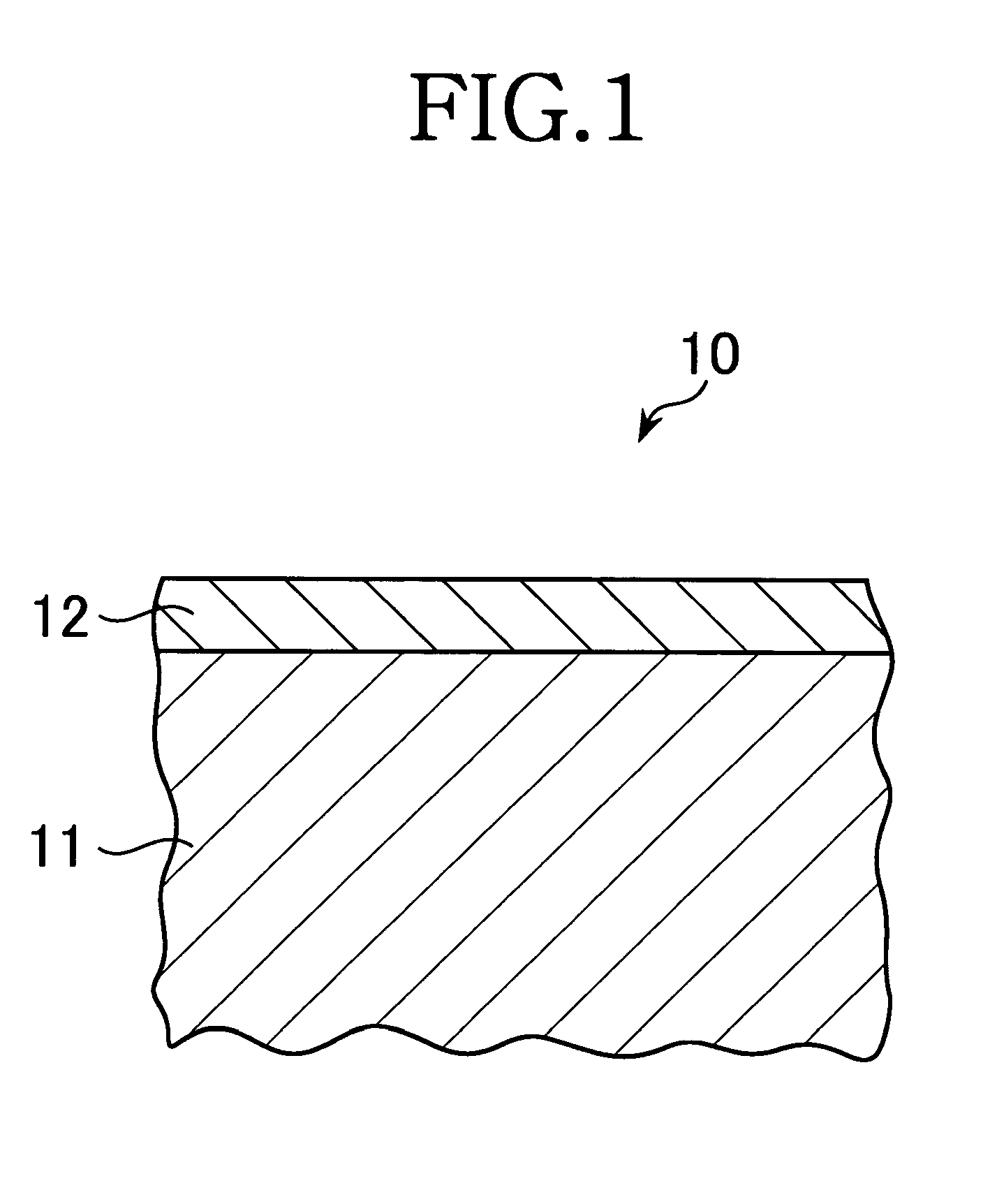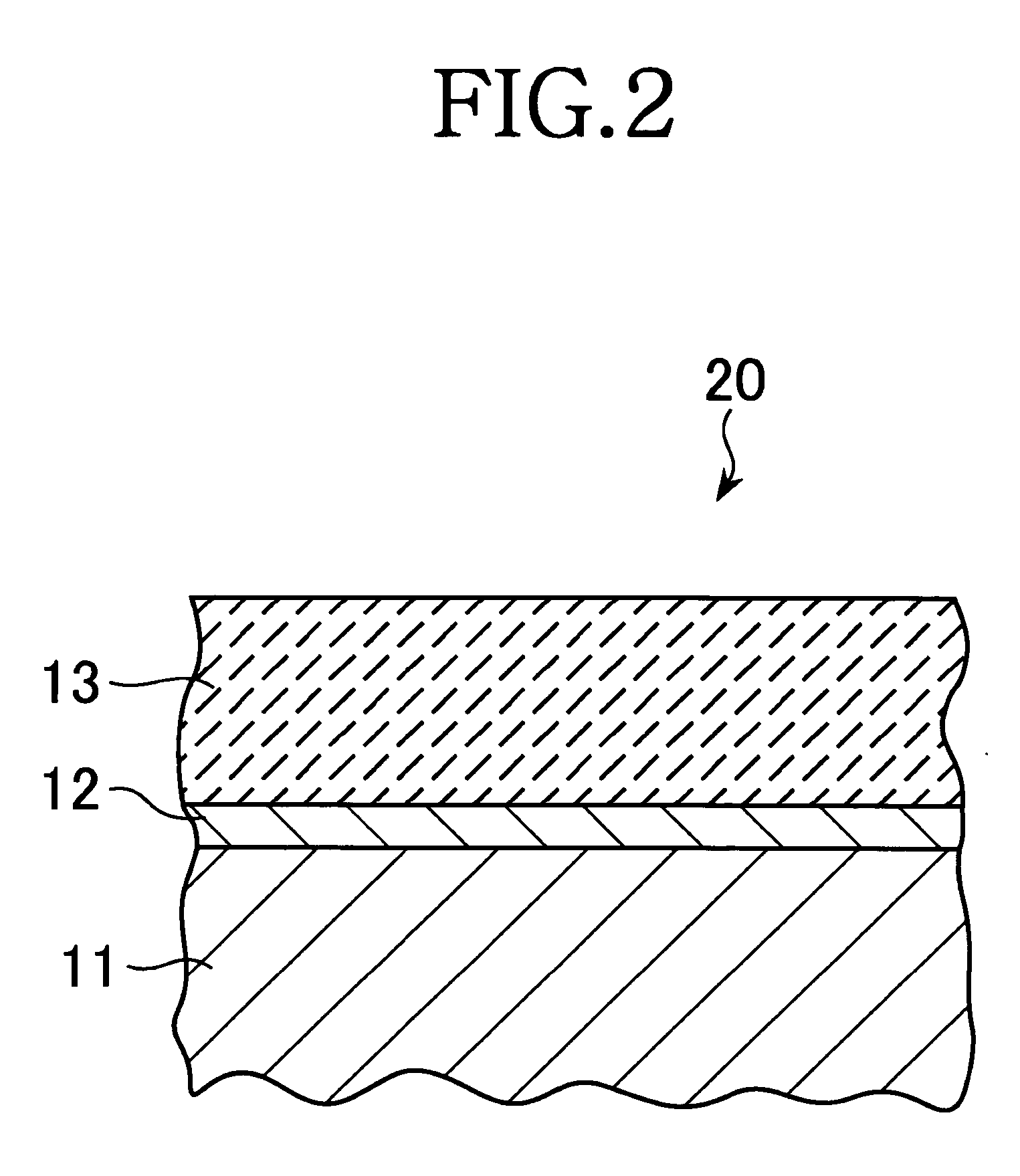Component for fabricating an electronic device and method of fabricating an electronic device
a technology of electronic devices and components, applied in the direction of solid-state devices, semiconductor devices, basic electric elements, etc., can solve the problems of limiting product configuration and integrating such electronic devices on the same substrate, and achieve the effects of improving device configuration freedom, efficient reflection of oscillations, and improving the characteristics of film bulk acoustic wave resonators
- Summary
- Abstract
- Description
- Claims
- Application Information
AI Technical Summary
Benefits of technology
Problems solved by technology
Method used
Image
Examples
example 1
[0070] In Example 1, a plurality of components for fabricating electronic devices having the structure of the component 30 shown in FIG. 3 were fabricated by the following method.
[0071] First, a substrate 11 was prepared from 3-inch-diameter wafer of single crystal silicon with a thermal oxidation film, and a 100 nm thick conductive film 12 of platinum (Pt) was formed on the substrate surface. A substrate temperature of 23° C. was used to form the conductive film 12, using vacuum deposition.
[0072] Next, an 1 μm thick functional film 13 composed of ZnO was formed on the lower conductive film 12 by RF magnetron sputtering.
[0073] Sputtering was then used to form a 300 nm thick conductive film 14 of aluminum (Al) on the functional film 13, thereby completing fabrication of the plurality of components in Example 1.
[0074] The adhesion between the conductive film 12 and the substrate 11 in the components thus fabricated was measured by conducting a peel test, and was found to be 0.005 ...
example 2
[0075] In Example 2, a plurality of components were fabricated in the same manner as in Example 1, except that the substrate temperature during formation of the conductive film 12 was set at 200° C.
[0076] The adhesion between the conductive film 12 and the substrate 11 in the components thus fabricated was measured by conducting a peel test, and found to be 0.025 N / cm. A peel test that was then carried out using ultraviolet curable dicing tape in which the tape together with the multilayer was peeled from the substrate, showed that peeling could be correctly performed with respect to all the components.
example 3
[0077] In Example 3, a plurality of components were fabricated in the same manner as in Example 1, except that the substrate temperature during formation of the conductive film 12 was set at 300° C.
[0078] The adhesion between the conductive film 12 and the substrate 11 in the e components thus fabricated was measured by conducting a peel test, and found to be 0.039 N / cm. A peel test that was then carried out using ultraviolet curable dicing tape in which the tape together with the multilayer was peeled from the substrate, showed that peeling could be correctly performed with respect to all the components.
PUM
| Property | Measurement | Unit |
|---|---|---|
| adhesion | aaaaa | aaaaa |
| adhesion | aaaaa | aaaaa |
| temperature | aaaaa | aaaaa |
Abstract
Description
Claims
Application Information
 Login to View More
Login to View More - R&D
- Intellectual Property
- Life Sciences
- Materials
- Tech Scout
- Unparalleled Data Quality
- Higher Quality Content
- 60% Fewer Hallucinations
Browse by: Latest US Patents, China's latest patents, Technical Efficacy Thesaurus, Application Domain, Technology Topic, Popular Technical Reports.
© 2025 PatSnap. All rights reserved.Legal|Privacy policy|Modern Slavery Act Transparency Statement|Sitemap|About US| Contact US: help@patsnap.com



